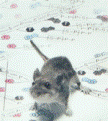Papers in the Biological Sciences

Jay F. Storz Publications
Document Type
Article
Date of this Version
2011
Citation
Genome Biol. Evol. 3:588–600. doi:10.1093/gbe/evr055
Advance Access publication June 21, 2011
Abstract
If rates of postduplication gene retention are positively correlated with levels of functional constraint, then gene duplicates that have been retained in a restricted number of taxonomic lineages would be expected to exhibit relatively low levels of sequence conservation. Paradoxical patterns are presented by gene duplicates that have been retained in a small number of taxa but which are nonetheless subject to strong purifying selection relative to paralogous members of the same multigene family. This pattern suggests that such genes may have been co-opted for novel, lineage-specific functions. One possible example involves the enigmatic globin-E gene (GbE), which appears to be exclusively restricted to birds. Available data indicate that this gene is expressed exclusively in the avian eye, but its physiological function remains a mystery. In contrast to the highly restricted phyletic distribution of GbE, the overwhelming majority of jawed vertebrates (gnathostomes) possess copies of the related cytoglobin (Cygb) and myoglobin (Mb) genes. The purpose of the present study was 1) to assess the phyletic distribution of the Cygb, Mb, and GbE genes among vertebrates, 2) to elucidate the duplicative origins and evolutionary histories of these three genes, and 3) to evaluate the relative levels of functional constraint of these genes based on comparative sequence analysis. To accomplish these objectives, we conducted a combined phylogenetic and comparative genomic analysis involving taxa that represent each of the major lineages of gnathostome vertebrates. Results of synteny comparisons and phylogenetic topology tests revealed that GbE is clearly not the product of a recent, bird-specific duplication event. Instead, GbE originated via duplication of a proto-Mb gene in the stem lineage of gnathostomes. Unlike the Mb gene, which has been retained in all major gnathostome lineages other than amphibians, the GbE gene has been retained only in the lineage leading to modern birds and has been independently lost in at least four major lineages: teleost fish, amphibians, mammals, and nonavian reptiles. Despite the restricted phyletic distribution of this gene, our results indicate that GbE is one of the most highly conserved globins in the avian genome.


Comments
Copyright 2011 Federico G. Hoffmann, Juan C. Opazo, and Jay F. Storz. Published by Oxford University Press on behalf of the Society for Molecular Biology and Evolution. This is an Open Access article distributed under the terms of the Creative Commons Attribution Non-Commercial License